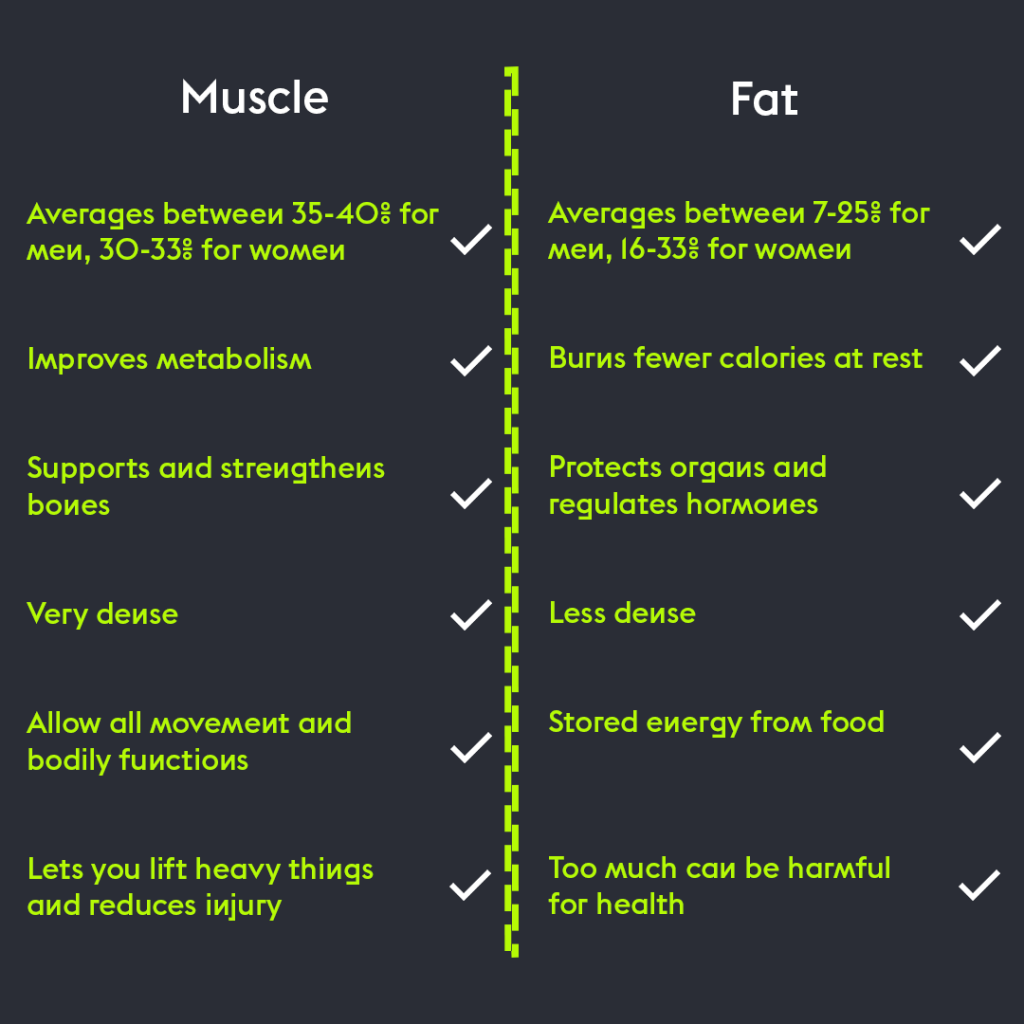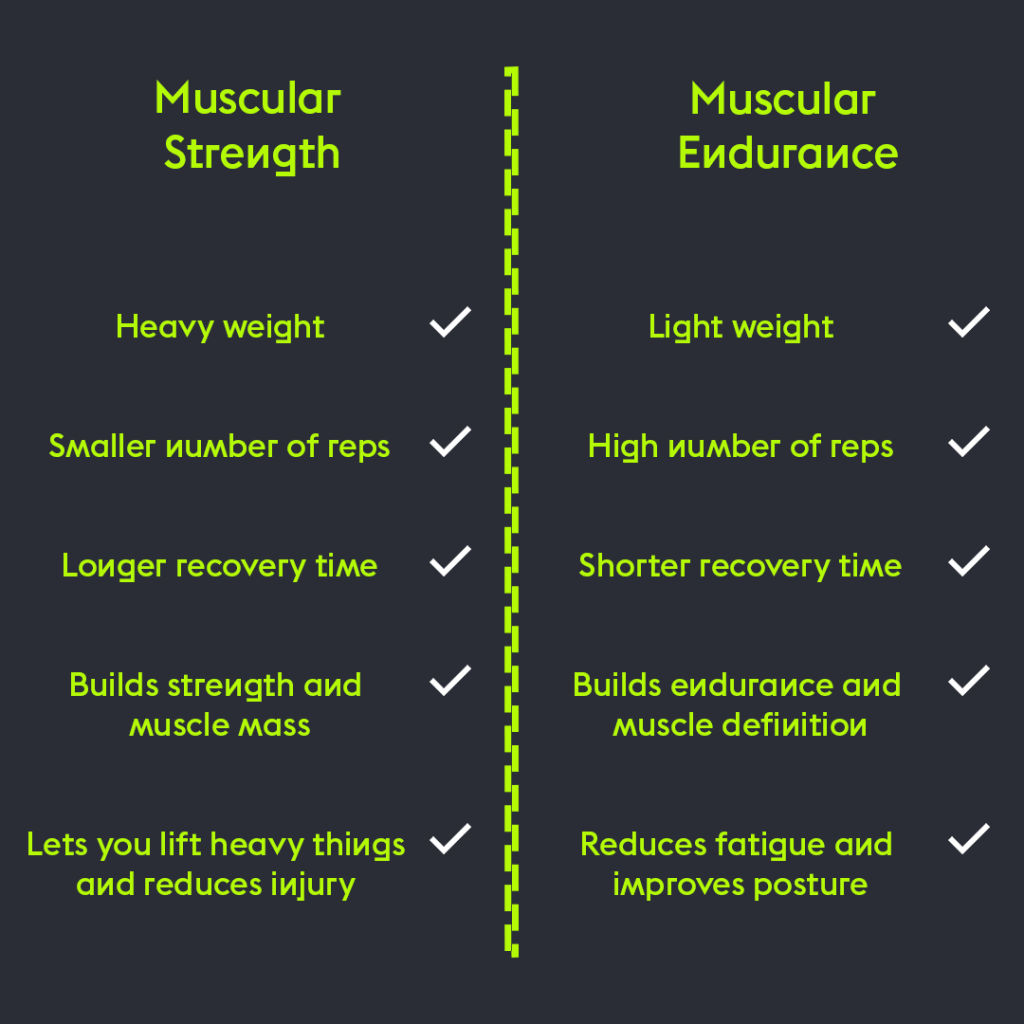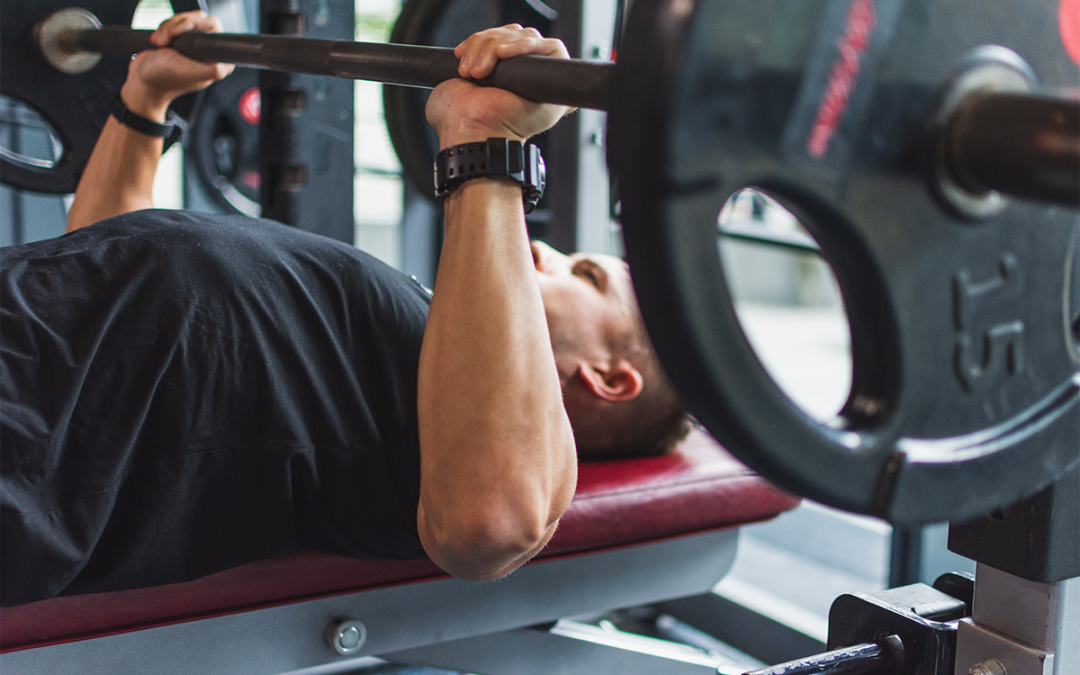There are many different types of fitness: cardiovascular, flexibility, mobility, muscular endurance, and muscular strength.
Strength is often hailed as the ultimate type of fitness training, and why many of us head to the gym. All that equipment is there to help us build up strength and muscle mass.
Muscular strength lets our bodies function. We all need it. It allows us to do every single movement that we make. Developing it and getting stronger brings a whole range of general health benefits that make it worth investing time in. Improving posture, reducing the risk of injury, improving bone density, improving energy levels, improving mental health. The list really does go on.
Strength plays a role for everybody. Not just the most elite weightlifters. Yogis need it to hold positions. CrossFit lovers need it to complete the circuit. Swimmers need it to propel themselves through the water. Runners need it so that their leg muscle can support the impact on their joints. Desk workers need it to maintain good posture. Retail assistants need it to stay on their feet all day.
A little bit of muscle goes a long way. So, if there are six things to know for those getting started with strength training, these are them.
1. Strength training changes your body composition
Probably one of the biggest reasons it’s so popular. Training and increasing your strength leads to an increase of a specific type of muscle fibre. This type of fibre can increase in size and mass significantly and lead to more visual changes in the mirror.
For women who worry about becoming big and bulky. Don’t. You’re not going to wake up one day bigger than you bargained for. Women lack the same amounts of testosterone as men needed to develop significant increases in muscle mass. Instead, women often see a firmer and more toned physique and a loss of fat from an increased metabolism.
For men, strength training consistently is likely to increase muscle mass. To see a significant increase in muscle size, you’ll need to consume a large amount of protein and probably more calories than you’re burning each day. This surplus helps to develop and fuel larger muscles. It’s the bulking part of the infamous bulk and cut, which may gym goers do on a seasonal basis.

2. Recovery is key
One of the main ways the body builds skeletal muscle is through a process of damage and repair. When you train your muscles, they are actually damaged during the process. Afterwards, the muscle fibres will repair themselves, increasing in thickness and number as they do so.
This part happens when you’re at rest, not during the training itself. For this reason, it’s crucial to let your muscles recover and do their repairing in peace.
Training the same muscle group day after day is not the right approach and will likely lead to injury. Make rest days an essential part of your strength training routine to ensure you progress properly.
3. Building muscle boosts metabolism
This statement is thrown around a lot, so it’s important to understand what it actually means and, therefore, how it helps.
Muscle burns more energy at rest than fat does. Muscle needs more calories to just do its thing during the day. We need to feed muscle more. If you have a higher percentage of muscle, you’re going to need more calories just to do all your normal activities.
By this logic, strength training and therefore building muscle is a way to boost your metabolism. You’ll be able to take on more calories and maintain your weight when strength training than someone who just does cardiovascular exercise will.

4. It’s not the only way to train your muscles
Strength training refers to lifting heavy weights. Progressively overloading your muscles with an increasing amount of weight is the way muscular strength is developed.
Muscular endurance is another type of physical fitness and refers to our muscles ability to withstand resistance or tension over longer periods.
Having high endurance means being able to go for longer. In this type of training, the focus is more often on time under tension, the number of reps being performed, and the increased exercise intensity.
Increasing muscular endurance is equally as important for our overall health and fitness. It’s less likely to result in significant increases in muscle mass as strength training will, but it will go a long way in developing a toned, firm and athletic physique.
These two types of fitness aren’t mutually exclusive in training. When you work on one, you’re probably testing the other too. High rep bodyweight exercises will still help develop strength in certain areas. Heavy lifting sessions will still help develop endurance to a degree.

5. Strength training isn’t the same as building muscle
Strength training and muscle building are often used interchangeably in the gym context. Although there’s a huge amount of overlap between the two, they aren’t exactly the same.
Increases in strength are caused by larger muscles with more fibres but also by neurological changes too. Your brain is trained to lift the heavy weights, as well as the muscles.
Building muscle is more about aesthetics and doesn’t refer to the neurological element. You can build muscle across a larger rep range, whereas to build maximum strength, you’re looking at the very heaviest you can possibly lift for the fewest amount of repetitions of an exercise.
6. Form should always come first
When on a strength training journey, the focus is on progression. This means lifting heavier over time to get stronger and increase muscle mass.
However, to do this properly, the right building blocks need to be in place.
When doing any exercise, the most fundamental thing to get right is your form. This means adopting the correct position, posture, and movement to do the exercise effectively.
Before increasing the weight you’re lifting, it’s crucial to perfect the exercise with the current weight in the correct form. Increasing the load when your form is poor means you’re not working the right muscles efficiently, and you risk injury and imbalances.



